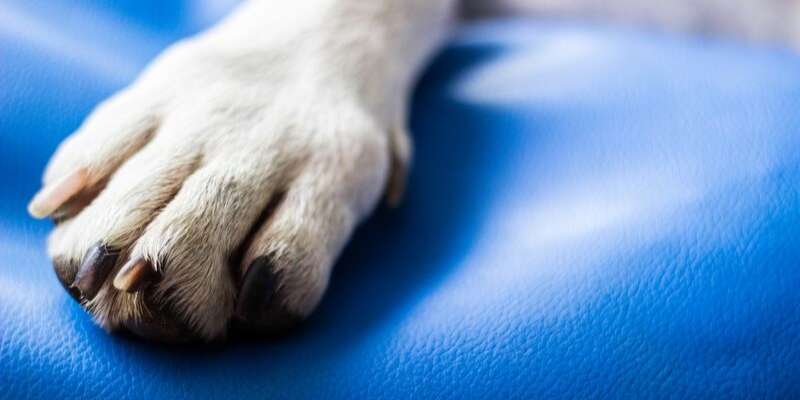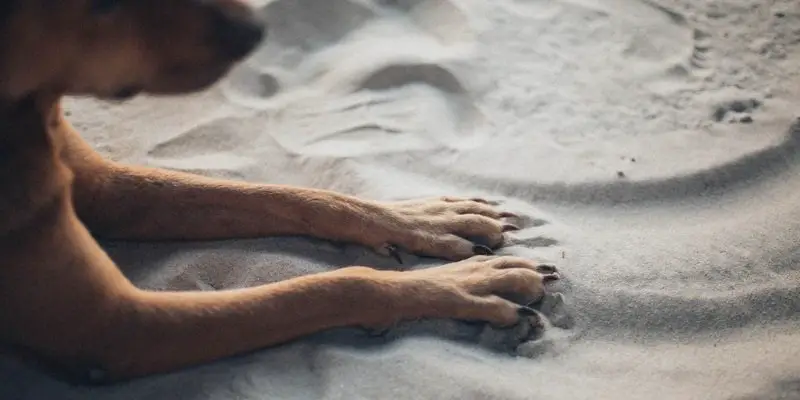What’s dog declaw?

Dewclaws are the dog’s thumbs and big toes. They are not the same as humans thumbs and toes, but similar for the sake of this explanation. Pay attention to dog’s front foot next time you have a chance: the toes that are in touch with the floor match our pinky, ring, middle, and index finger. And so dewclaw is the “thumb.” The same logic applies to canine’s hind foot where dewclaw can be called “big toe.”
A dewclaw that is connected by bone to a dog’s front foot has a particular purpose. When dogs move, their front feet often lean till their declaws touch the ground. On slippery surfaces and at the high speeds (and especially when turning) dewclaws give extra friction and help support the wrist joint. Some pups also utilize their declaws as additional support to climb trees, grip objects for better chewing, move on the ice, etc. The value of dewclaws that are only connected by the skin is less obvious.

What is declawing a dog?
Many people think that declawing a dog is just a lasting nail trim, but nothing can be farther from the truth.
As explained by Dr. Jean while comparing more common cat declawing with the same procedure in dogs, cats have three bones and two joints. A cat’s claw grows from the last bone; therefore, to prevent the nail growth this bone has to be amputated.
The procedure requires cutting within the second and third bones and removing the one that holds the claw. That, of course, affects everything around, including nerves and blood vessels. To sum it up – the declaw only of the front paws requires ten amputations. So, wrapping it up, declawing your dog is definitely NOT a permanent nail trim.
You might also like:
Hypoallergenic Dog Food: Pros&Cons, Best Brands, DIY Recipes
13 Barkworthy Dog Pajamas: Plaid, Christmassy, Cutest, and Cheapest

Dog declaw surgery
When pets are declawed, their knucklebones are fully removed from their toes. It isn’t just tearing the nails out. Imagine your fingertips are chopped off. Declawing a dog is pretty much the same.
Not everyone knows what precisely surgical declaw requires, leading them to think dogs can have their nails eliminated easily. That’s why there’s so much controversy around this procedure amongst both vets and pet owners.

Declawing puppies
If declaws aren’t amputated right after birth, the next chance to make it happen is during spay or neuter. If a puppy has cut or otherwise damaged the dewclaws before, it makes sense to remove the declaws to prevent re-injury.
In a few cases, a dog’s declaw may be seriously hurt or develop a dangerous condition (e.g., a cancerous tumor). So, in this instance, declawing will serve the pup’s best interest. But those are more of an exception rather than a rule.

Why would you declaw a dog?

Declawing the canines is not medically obligatory. It’s completely unnecessary since dog actively uses their nails for a wide variety of activities from digging to scratching. Not everyone knows what precisely surgical declaw requires, leading them to think dogs can have their nails eliminated easily.
In several breeds — but surely not all of them — declawing has been a common tradition when declaws are eliminated during a couple of days after pup’s birth.
In some breeds, this procedure used to improve presentation for the show ring. In others, to prevent potential health issues. But those problems happen so seldom, that it makes close to zero sense to remove healthy declaws to protect the puppy from then.

Dog claw removal: last piece of advice
As with many other optional procedures in pets (such as tail crops, for example), the opinion on dewclaws has been leaning toward letting them as it is. It’s considered that they may provide dogs an advantage in competitions such as agility.
But if your pup is not a show dog, it’s better to keep those claws as it is. Just pay attention to keeping the nails trimmed short. It is necessary because many times the reason a dewclaw is hurt when the nail hooks on something.
And with the number of handy tools for pups hygiene on the market, it shouldn’t be a problem (for instance, if you have a dog with MONSTER toenails? would be just perfect for you).
And nail trimming may, in fact, become your special bonding activity.


Declawing your pet. Summary
There is practically no sound reason justifying the declaw’s removal. Your pup needs those for scratching, digging and playing – some of his favorite activities. Eliminating the joints on each toe may make it difficult for a dog to move and also might provoke the development of arthritis and spinal injuries. Just think how hard it would be for you to move if your toes were chopped off. And it’s the very same for your dog.
Credits: thanks for the photo to Elina Sazonova from Pexels and Canva.


